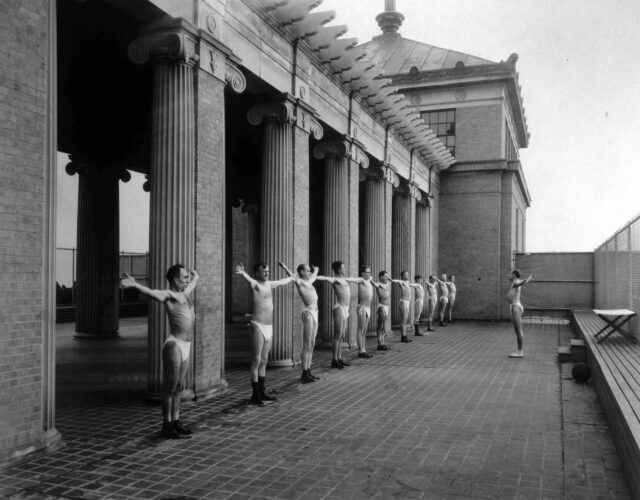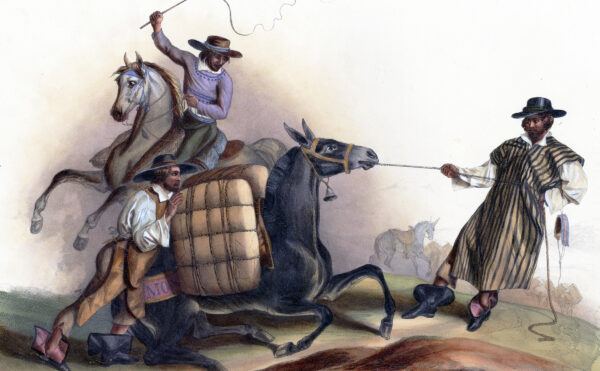In the early 20th century a busy mother trying to prepare a healthy meal for her family might turn to The New Cookery. One of the cookbook’s recipes, protose cutlets, sounds easy enough:
These days we recognize the eggs, milk, salt, and cornflakes. But protose? A combination of nuts and grains concocted by a doctor named John Harvey Kellogg, protose was just one of many new foods created at the turn of the 20th century by food reformers and home economists seeking to improve the diet of everyday Americans. While Kellogg’s recipes sprang more from religious fervor than scientific inquiry, his work would later encourage acolytes to promote dietary health in the new context of home economics.
Kellogg’s linking of diet and soul had its roots in the ecstatic visions of Ellen G. White, one of the founders of the Seventh-day Adventist Church. Like Sylvester Graham (of graham-cracker fame), White and her followers abstained from alcohol, coffee, sex, and the eating of animal flesh. In 1866 White and her followers established the Western Health Reform Institute in a small two-story farmhouse just outside Battle Creek, Michigan. Patients were encouraged to heal themselves using sunshine, water, rest, exercise, and a proper diet, which included far less protein than Americans at the time were used to consuming. Patients were also encouraged to avoid tobacco, alcohol, and caffeine. In the post−Civil War era, a time when doctors prescribed whiskey, coffee, and quinine to combat disease, this was a new approach to preserving and restoring health.
At first the Western Health Reform Institute was run largely by Adventist farming women, though White soon realized the institute needed trained staff. To that end she and her husband, James, subsidized medical training for the young Kellogg, the son of a devout Adventist shopkeeper in Battle Creek. By 1877 Kellogg was installed as the institute’s medical director, a position he held until his death in 1943.
Almost immediately Kellogg set about changing things at the institute—including its name, which became the Battle Creek Medical Surgical Sanitarium, or the San, for short. Within a decade the San went from treating 300 patients per year to almost 1,200.
Under Kellogg’s eccentric and charismatic stewardship the San became a destination, a health spa that attracted celebrities of all stripes who sought respite from the fatigue of their everyday lives: Henry Ford, future U.S. President Warren G. Harding, Amelia Earhart, J. C. Penney, John D. Rockefeller, and even Tarzan himself, actor Johnny Weissmuller. Guests attended lectures on food preparation and the virtues of celibacy, indulged in artificial sunbaths, and took advantage of the San’s elaborate exercise equipment. They also received a regimen of colonic irrigations—the gut being the seat of all disease in Kellogg’s estimation. And the San’s patients traded their typical breakfasts of eggs and meat for a vegetarian diet the devout doctor believed would improve their health.
One of the staples on the San’s menu was protose, which Kellogg claimed was “more digestible than flesh meats” and “free from danger of contamination with the disease germs or putrefaction products.” Protose, though, was just one of the many vegetarian options Kellogg offered his patients. Also central to the San’s food regimen was a product called granola, a rip-off of a cereal created in 1863 at James Caleb Jackson’s sanitarium in New York, and a tough cracker called zwieback, which patients chewed before meals to prevent tooth decay.
Legend has it that one night in 1894, Kellogg and his younger brother, Will Keith, who together had been experimenting with grains in a search for a more pleasant alternative to zwieback, forgot to put away a batch of wheat-berry dough. The next morning, undeterred by their mistake, they forced the stale dough through rollers and got flaky dough. Toasted, the flakes became an instant favorite among the sanitarium’s patients.
Around the same time, the brothers began looking beyond the confines of the San. The pair set up the Sanitas Nut Food Company to produce, distribute, and sell the whole-grain cereals served to the San’s patients. In their first year of production the Kellogg brothers sold tens of thousands of pounds of wheat-flake cereal, called granose, mostly to former patients. But they soon had a competitor. Charles William “C. W.” Post, who had visited the San in the early 1890s in search of a cure for his recurring mental breakdowns, founded a company in Battle Creek whose name, thanks to the San, had become synonymous with health. He sold Postum, a coffee replacement made from roasted grains, as well as his now more famous invention: Grape-Nuts. Encouraged by the success of granose and roused by Post’s competition, the Kellogg brothers experimented with flaking rice and corn, releasing their first version of Sanitas Toasted Corn Flakes in 1898; they followed with a better version of the cereal with a longer shelf life in 1902.
But all was not well at the San and at Sanitas. That same year a fire destroyed the sanitarium, which was already saddled with huge debt. White and other church leaders, who’d grown alarmed with John Harvey Kellogg’s increasingly panentheistic religious views, ordered Kellogg not to rebuild. Undaunted and under pressure to compete with Post, Kellogg planned to fund the rebuilding project through sales of his book The Living Temple. The book outlined “the proper care and training of the body” and explored his theology, and its publication further broadened the schism between Kellogg and White. Ultimately cereal sales financed the reconstruction.
In the meantime Will Keith’s ideas for the family business began to depart from John Harvey’s spiritually minded, health-conscious motivations. When the younger Kellogg proposed adding sugar to the new flaked cereals to drive sales, brotherly bickering set in. Sugar repulsed John Harvey, who believed the sweetener to be hazardous to health. Frustrated with his brother’s refusal to support the sale of sugary foods or even an increase in advertising for the company’s products, Will Keith left Sanitas in 1906 to found the Battle Creek Toasted Corn Flake Company. The new company introduced cornflakes to Canada and later branched out into all-bran and bran-flake cereals.
Spurred by Will Keith’s tremendous success, John Harvey began copying his brother’s marketing, employing the family name to sell his own line of cornflakes in boxes that closely resembled the ones used by Will Keith. (In 1921 Will Keith successfully sued his brother over the cornflake recipe and the use of their name; it was Will Keith’s company that grew and grew until the box with the red signature was found on grocery-store shelves across the United States and throughout the world.)
While his brother’s company flourished, John Harvey stayed on at the San, writing prolifically and venturing out to lecture in the United States and Europe about intestinal flora, the dangers of tobacco, the benefits of soy foods, and how to combat neurasthenia—a uniquely American form of exhaustion. White had “disfellowshipped” Kellogg from the Seventh-day Adventist Church in 1907, but the move had no effect on Kellogg’s work or the San.
In 1908 he hired Lenna Frances Cooper as director of the San’s School of Health and Home Economics, one of the first of its kind. The school was designed to train dietitians for hospitals, school cafeterias, and private clubs; in the 1910s its focus turned to training future home-economics teachers. An ad in the back of the 1914 edition of Cooper’s cookbook proclaimed that “students enjoy congenial companionship, pleasant educational surroundings and the many activities afforded by the Sanitarium with which the School is affiliated.” Cooper’s hiring came at the beginning of a trend; Sears, Procter and Gamble, and other major companies went on to hire women to form and lead corporate home-economics departments. Their job was to help women refine their cooking and housekeeping abilities and in so doing build an avid audience for their employers’ products.
In 1913 Cooper published The New Cookery, aimed at teaching housewives to prepare “palatable and attractive” vegetarian meals, though today’s meat-free epicurean might turn up her nose at recipes for prune fritters and lima-bean loaf.
In the book Cooper draws on the research of Yale University physiologist and chemist Russell Henry Chittenden, who developed “low-protein” standards for meal preparation and believed home cooks could cure and prevent chronic illnesses by using cookbooks that included the latest research on nutrition. A reviewer for Journal of the Outdoor Life, a health publication devoted to fighting tuberculosis, commended Cooper’s cookbook for its discussion of bacteria, the energy value of fats and carbohydrates, and the importance of serving raw vegetables to avoid the loss of nutrients. Cooper went on to cofound the American Dietetic Association in 1917, now the Academy of Nutrition and Dietetics, and at the end of World War I served as the U.S. Army’s first supervising dietitian.
In the decades that followed, women, both real and fictitious, continued to lead the way in the fields of nutrition and home economics. In 1921 General Mills introduced Betty Crocker, who offered homemaking advice to women consumers across the country. Two years later Will Keith Kellogg hired a real woman, dietitian Mary Barber, to direct his company’s home-economics division and to develop recipes that employed Kellogg’s products. During World War II, Barber worked for the U.S. Army and, building on the work of Cooper as well as on the guidelines Barber herself developed at Kellogg’s, planned a “master menu” of meals for soldiers that became the foundation of the army’s field rations.
The New Cookery went through 14 editions, the last one published in 1940. Seventy-five years later, American consumers won’t find protose in the grocery store, but they will find other meat alternatives that might work equally well in Cooper’s cutlets recipe. For those who want to give it a try, there are at least a dozen protose recipes online.






